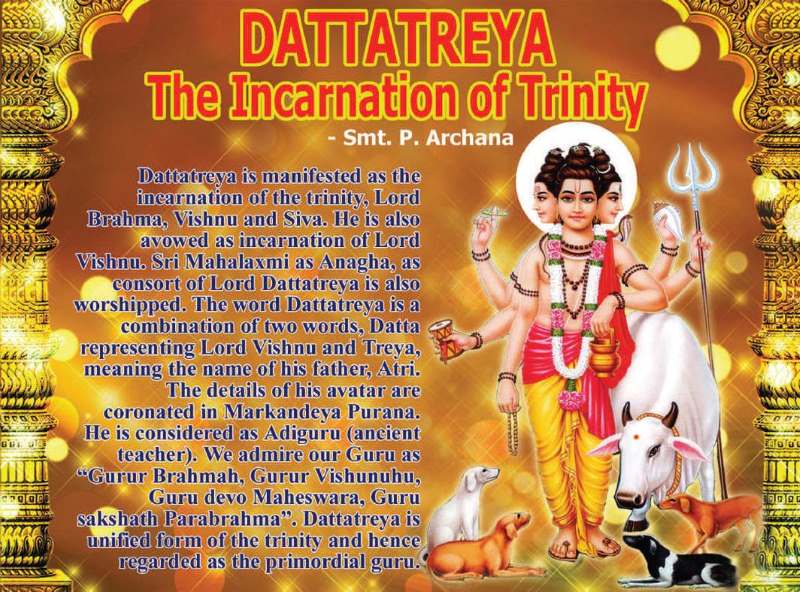Dattatreya Salutation to Lord Dattatreya who created the universe, who is predominate for existence and destruction and is saviour from the bonds of sorrows of life. Dattatreya Upanishad in Atharvana Veda mentions this avatar. He preached Sri Vidya upaasana (Tripura rahasya) to Parasurama in Tretayuga. He also preached Ashtanga yoga (the eightfold path of yoga). Read More
Tag: Dattatreya
Lord Dattatreya is an incarnation of the divine trinity- Brahma, Vishnu, Maheswara. He was born of rishi Athri and his wife Anasuya. Dattatreya is typically imaged with three heads and six hands.

